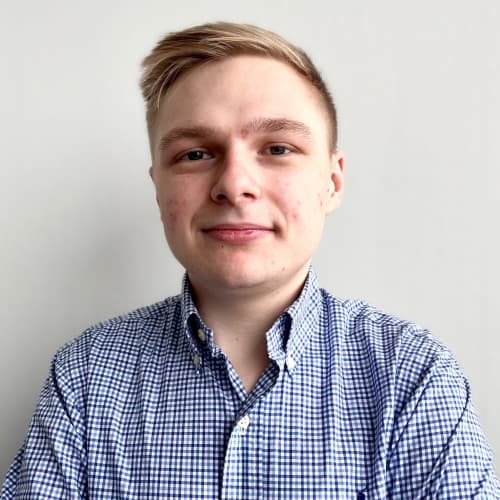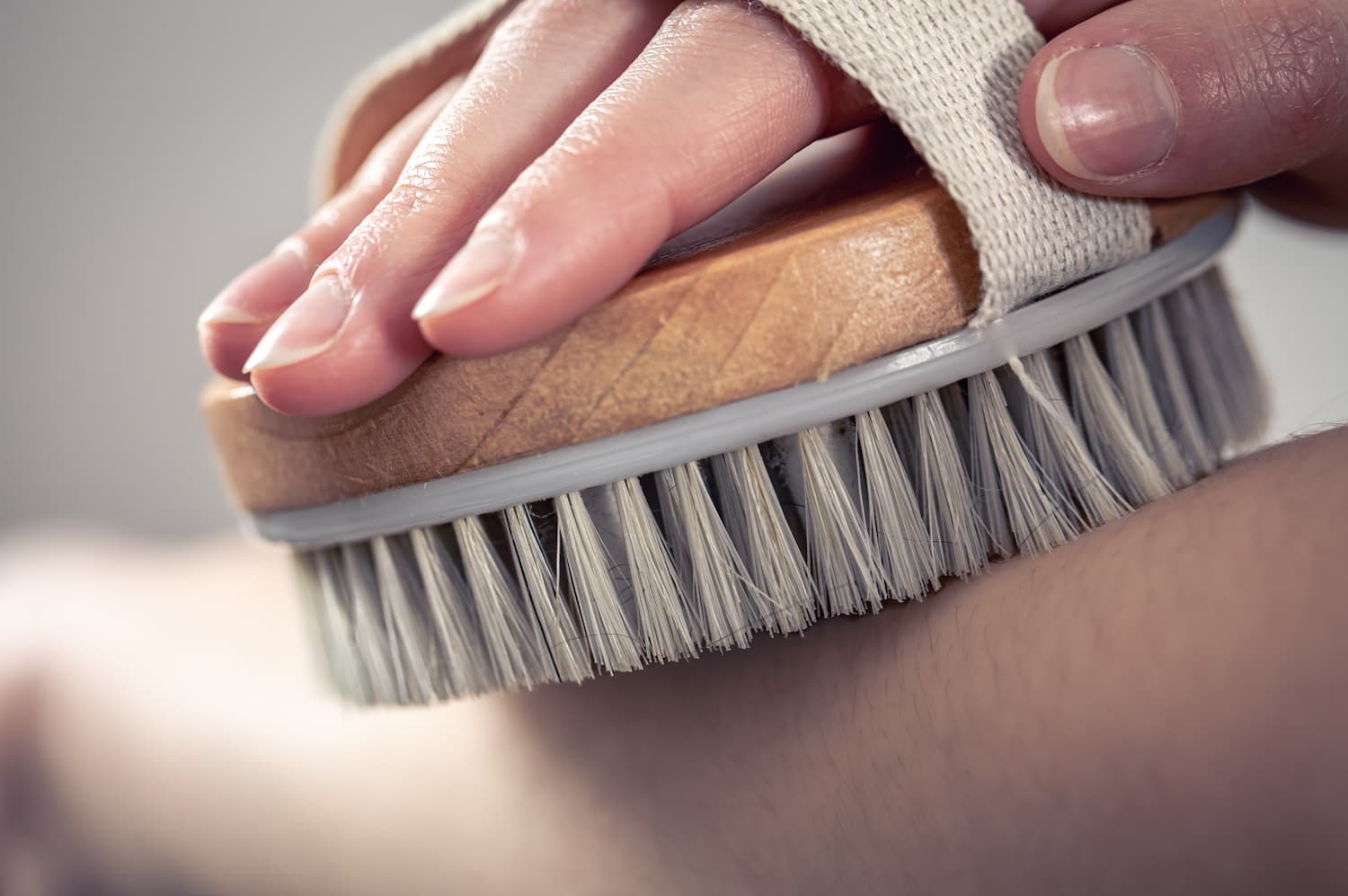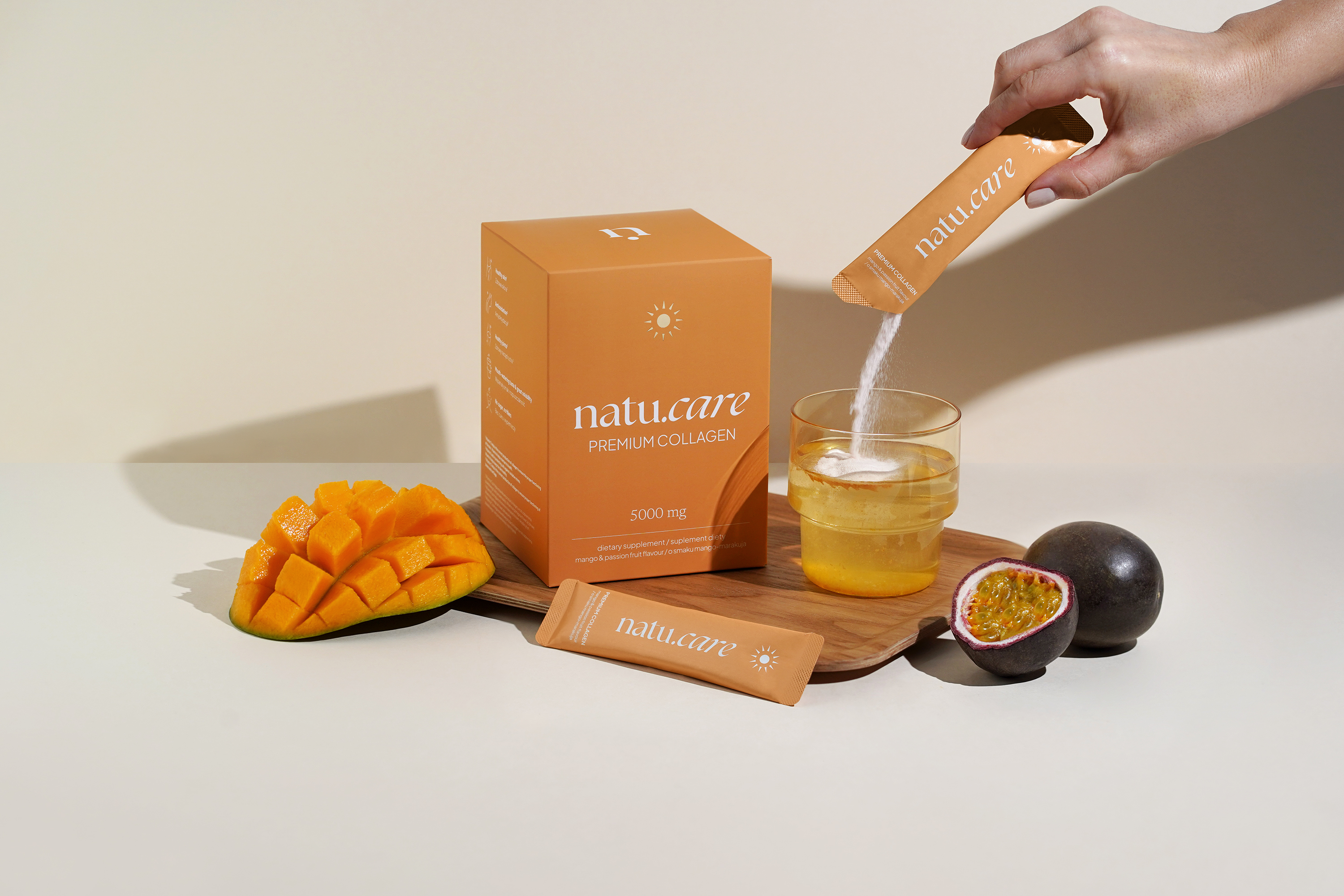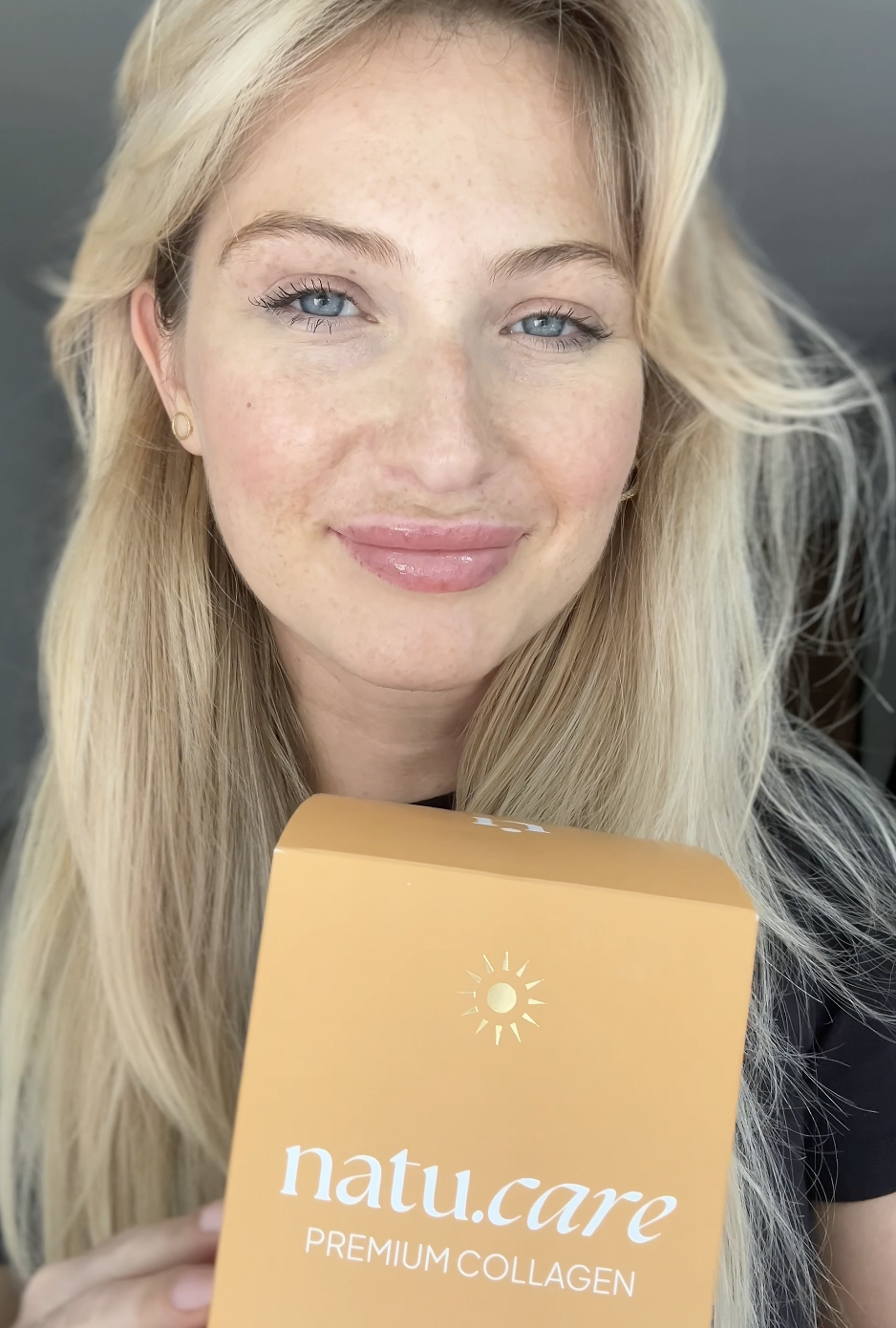Dry brushing: how to do it to get results
A technique that I used to completely disbelieve in, but is now a daily part of my skincare routine. Have a read and (I hope) it will be the same with you.


Learn more about our editorial process
.

Learn more about our editorial process
.

Learn more about our editorial process
.
Why you can trust us
Articles on Natu.Care are written based on scientific research, data from government websites and other reliable sources. The texts are written in cooperation with doctors, nutritionists and other health and beauty experts. Articles are reviewed before publication and during significant updates.
.Learn more about our editorial process
.Information about advertisements
Content on Natu.Care may contain links to products from the sale of which we may receive a commission. When creating content, we adhere to high editorial standards and take care to be objective about the products discussed. The presence of affiliate links is not dictated by our partners, and we select the products we review ourselves completely independently.
.Learn more about our terms and Conditions
.If you want smooth and radiant skin, I have something for you. Let me reveal to you a secret practice - dry brushing. When I see my body brush, I can't help but smile. And yet it wasn't always like this.
When I first came across a shelf of body brushes, I remember thinking: "What are these things anyway and who uses them?". But I wouldn't have been me if I hadn't started my own little brush investigation.
Long story.
Long story short - I fell in love with dry brushing and now I want to share this technique with you.
In this article you will learn:
.- what dry brushing is, .
- what its advantages and disadvantages are, .
- how to brush your body properly, .
- and, of course, what the science says about all this. .

Sprawdź, za co pokochały go tysiące klientek Kolagen Premium (5000 mg) mango-marakuja -15% z kodem BLOG15
Natu.Care Kolagen Premium 5000 mg, mango-marakuja
Natu.Care Kolagen Premium dla zdrowia stawów, skóry, paznokci i włosów. Najlepsza przyswajalność. Optymalna dawka 5 000 lub 10 000 mg. Przebadany przez niezależne laboratorium.
Zobacz więcej
Wybrałam kolagen Natu.Care, ponieważ miał super opinie – a to było dla mnie bardzo ważne! Odkąd go stosuję, moja skóra znacznie się poprawiła i jest nawilżona, a na głowie pojawiły się nowe "baby hair".@Kasia S.
See also:
- Tips from TikTok: tooth glue and face lube
- Collagen for skin, hair and nails
- This cream ingredient won't work. Check it out!
- The deficiency of this ingredient can be seen on the skin .
- Collagen for stretch marks
What is dry brushing
.
Dry brushing is the practice of massaging your body with a dry brush before you step into the shower or bath. This treatment is designed to remove dead skin cells, stimulate circulation and the lymphatic system and promote healthy, smooth skin.
Proper dry brushing technique
.
The dry brushing technique involves dragging a dry brush over the skin, applying moderate pressure and using long and gentle movements, usually in the direction of the heart. These movements are intended to stimulate blood and lymph circulation. You can carry out this treatment before a shower or bath. After brushing, apply a moisturising lotion or oil to the body.
.
Types of brushes used in this practice
.
Dry brushing brushes vary in their materials, bristle hardness and shape. The most popular brushes are those with natural bristles, such as boar, horse or goat hair.
You can choose soft, medium or hard bristles, depending on your preferences and the sensitivity of your skin. An alternative to natural brushes are synthetic fibre brushes - hypoallergenic and easier to clean. Brushes can have a long handle, which makes it easier to reach hard-to-reach areas, or they can be in glove form, which fits perfectly in your hand.
A brief history of brushing
.
Dry brushing has an extensive history and roots dating back to various cultures. In ancient Egypt, Greece and Rome, body brushing was a popular cleansing ritual. In ancient India, the practice of garshana, or dry body massage with silk or wool gloves, was practised as part of Ayurvedic care.
Why it's worth it - key benefits of dry brushing
.
Improves circulation
.
Dry brushing stimulates blood circulation, which helps deliver oxygen and nutrients to skin cells. Improved circulation can also contribute to increased energy and vitality.
Exfoliates the epidermis
.
Dry brushing removes dead skin cells, leading to a natural and gentle exfoliation of the skin. This results in smooth, soft and radiant skin.
Promotes the lymphatic system
.
Dry brushing can support the lymphatic system, which is responsible for removing toxins and waste from the body. The movement of the brush towards the heart helps to move lymph, which can help to cleanse the body and strengthen the immune system.
Reduces cellulite
.
Some claim that regular dry brushing can help reduce cellulite by stimulating circulation, massaging connective tissue and facilitating the elimination of toxins. However, it is worth noting that there is no conclusive scientific evidence to support this theory. In myself, I have not noticed spectacular results in this regard.
.
Strengthens the immune system
.
By supporting the lymphatic system and cleansing the body of harmful substances, dry brushing can help to strengthen the immune system. A stronger immune system is better equipped to fight infection and disease.
Relaxes and relieves stress
.
Dry brushing can be a relaxing and de-stressing ritual that helps reduce stress levels. The gentle strokes of the brush over your skin can soothe your nervous system, provide a better sense of wellbeing and improve the quality of your sleep.
Disadvantages and risk factors of dry brushing
.
Skin irritation
.
If you notice redness, itching or other irritation during dry brushing, adjust the pressure and type of brush to avoid discomfort. Remember that everyone's skin may react differently, so take care of your individual needs.
Using the wrong technique
.
To avoid negative effects such as irritation, uneven exfoliation or over-stretching of the skin, try to use moderate pressure, make long, gentle movements towards the heart and avoid tugging the skin when dry brushing.
Contraindications (e.g. open wounds, skin infections)
.
If you have open wounds, skin infections, active acne or psoriasis, avoid dry brushing. In these cases, brushing can aggravate your skin and cause additional irritation. If in doubt, consult your doctor or dermatologist before starting a dry brushing practice.
Potential overdoing
.
Although dry brushing can be enjoyable, remember that brushing too frequently and aggressively can lead to irritation, dry skin and damage to the skin barrier. Optimally, dry brush no more than 2-3 times a week to give your skin time to regenerate and maintain a healthy appearance.
How to brush your body properly
.
Preparing your skin and environment
.
Start by making sure your skin is dry and your surroundings are clean and free of obstructions. The best time for dry brushing is before a shower or bath.
Brushing direction
.
Always brush in the direction of the heart. Start with your feet and then move upwards, brushing your legs, buttocks and back. Finally, brush the arms, starting with the palms and moving towards the shoulders.
Pressure and technique
.
Apply moderate pressure, tailored to your skin sensitivity. Use long, smooth strokes, avoiding tugging the skin. On sensitive areas, such as the abdomen and décolleté, be especially gentle.
Frequency and duration
.
Optimally dry brush 2-3 times a week to give your skin time to recover. The entire dry brushing process should take about 5-10 minutes. Remember to adjust the time and frequency according to your individual needs and skin response.
>
How to choose the right brush
.
Bristle types (natural vs synthetic)
.
Select a brush with natural bristles, such as agave fibres or boar bristles - these are gentler on the skin and more environmentally friendly than their synthetic counterparts. By choosing a brush with natural bristles, you will become a true eco-warrior.
Brush hardness
.
Choose a brush with a hardness that matches your skin sensitivity. If you have sensitive skin, start with a soft brush. If your skin is less sensitive, you can try a brush with a medium hardness. Remember that you can always do the "Goldilocks" test - neither too soft nor too hard, but just right!
Ergonomics and handle comfort
.
Choose brushes with an ergonomic handle that will allow you to brush even hard-to-reach areas comfortably and easily.
Additional criteria
.
When choosing a brush, pay attention to its quality, the materials used in its manufacture and its design. Look for brushes made from sustainable and environmentally friendly materials such as wood or bamboo. This will not only make you an environmental heroine, but will also make your bathroom look more stylish!
How to care for your brush so it lasts you longer
.
Clean your brush after use
.
After each use, clean the brush to remove dead skin cells and any debris. You can do this by using your hands and a mild soap.
.
Remember to dry
.
After washing your brush, place it bristle-down on a clean towel to allow it to dry. Avoid drying your brush on a radiator or directly in the sun, as this can lead to damage to the bristles. Look after your brush as you would your own hair - with love and care.
Don't delay replacing
.
Schedule to replace your brush every 6-12 months, depending on how often you use it and the condition of the bristles. If you notice that the bristles are starting to break, fall out or lose their resilience, it's a sign that it's time for a new brush.
Scientific consensus (or rather lack thereof) on dry brushing
.
Research confirming benefits
.
There are several scientific studies that confirm the benefits of dry brushing, such as improving circulation , exfoliating the epidermis or supporting the lymphatic system . In the world of science, dry brushing is gaining its followers.
Research questioning effectiveness
.
On the other hand, some studies question the effectiveness of dry brushing, especially when it comes to reducing cellulite or boosting the immune system .
Scientists are a bit like the cinematic Justice League - everyone has an opinion, but together they strive to discover the truth.
.
Boundaries of current research
.
It is worth bearing in mind that many studies on dry brushing have limitations, such as small numbers of participants or lack of long-term results. Therefore, it is worth approaching them with some distance - just like rumours of movie star romance.
Further research is needed
.
Although dry brushing is popular, scientists are still looking for more convincing evidence of its benefits and potential risks. Go ahead and experiment with dry brushing, but remember to listen to your body's signals and observe its response to this practice. Together with science, we are moving forward towards more beautiful skin!
Summary
.
- Dry brushing is a practice that can bring many benefits to your body and well-being. It's worth trying this technique to judge for yourself its effects on your skin and overall comfort.
- If you are curious about dry brushing, start by choosing the right brush and follow the principles of correct technique. .
- Remember to listen to your body's signals and adapt your practice to your needs. Since life is an adventure, why not give this unusual grooming technique a chance? .
Thanks for reading! If you have any questions - feel free to drop by the comments section.
Resources
.See all
.Evanega, S., Lynas, M., Adams, J., Smolenyak, K. (2020). Coronavirus Misinformation: Quantifying Sources and Themes In The Covid-19 'Infodemic' (Preprint). https://doi.org/10.2196/preprints.25143
Liu, H., Chen, W., Ober, C., Daniel, S. (2017). Biologically Complex Planar Cell Plasma Membranes Supported On Polyelectrolyte Cushions Enhance Transmembrane Protein Mobility and Retain Native Orientation. Langmuir, 3(34), 1061-1072. https://doi.org/10.1021/acs.langmuir.7b02945
Michaels, B., Keller, C., Blevins, M., Paoli, G., Ruthman, T., Todd, E., ... & Griffith, C. (2004).
Prevention Of Food Worker Transmission Of Foodborne Pathogens: Risk Assessment and Evaluation Of Effective Hygiene Intervention Strategies. Food Serv Technol, 1(4), 31-49. https://doi.org/10.1111/j.1471-5740.2004.00088.x
Møretrø, T., Ferreira, V., Moen, B., Almli, V., Teixeira, P., Kasbo, I., ... & Langsrud, S. (2022). Bacterial Levels and Diversity In Kitchen Sponges And Dishwashing Brushes Used By Consumers. Journal of Applied Microbiology, 3(133), 1378-1391. https://doi.org/10.1111/jam.15621
.
Editorials
Meet the team

Editor
Graduate of Journalism and Artes Liberales at the University of Warsaw. Since 2017, he has been working with the biggest portals in Poland and abroad as an editor. Previously worked for 3 years in one of the leading pharmaceutical companies - he knows the health and beauty industry inside out. In his free time, he most enjoys playing tennis or skiing.

What is retinol and how do you implement it into your skincare routine? You're about to find out.

The cult drug Benzacne owed its effectiveness precisely to benzoyl peroxide. Since its withdrawal, many damaging myths have arisen about this substance. Here we debunk them.

Do you already use niacinamide products in your daily skincare routine? If not, it's time to start.
